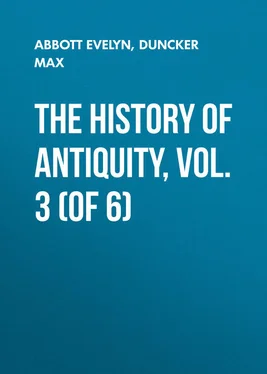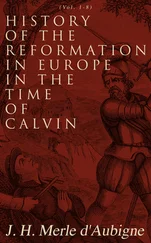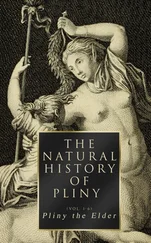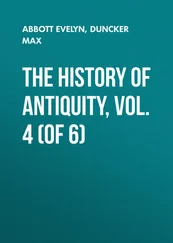Evelyn Abbott - The History of Antiquity, Vol. 3 (of 6)
Здесь есть возможность читать онлайн «Evelyn Abbott - The History of Antiquity, Vol. 3 (of 6)» — ознакомительный отрывок электронной книги совершенно бесплатно, а после прочтения отрывка купить полную версию. В некоторых случаях можно слушать аудио, скачать через торрент в формате fb2 и присутствует краткое содержание. Жанр: foreign_antique, foreign_prose, Историческая проза, на английском языке. Описание произведения, (предисловие) а так же отзывы посетителей доступны на портале библиотеки ЛибКат.
- Название:The History of Antiquity, Vol. 3 (of 6)
- Автор:
- Жанр:
- Год:неизвестен
- ISBN:нет данных
- Рейтинг книги:5 / 5. Голосов: 1
-
Избранное:Добавить в избранное
- Отзывы:
-
Ваша оценка:
- 100
- 1
- 2
- 3
- 4
- 5
The History of Antiquity, Vol. 3 (of 6): краткое содержание, описание и аннотация
Предлагаем к чтению аннотацию, описание, краткое содержание или предисловие (зависит от того, что написал сам автор книги «The History of Antiquity, Vol. 3 (of 6)»). Если вы не нашли необходимую информацию о книге — напишите в комментариях, мы постараемся отыскать её.
The History of Antiquity, Vol. 3 (of 6) — читать онлайн ознакомительный отрывок
Ниже представлен текст книги, разбитый по страницам. Система сохранения места последней прочитанной страницы, позволяет с удобством читать онлайн бесплатно книгу «The History of Antiquity, Vol. 3 (of 6)», без необходимости каждый раз заново искать на чём Вы остановились. Поставьте закладку, и сможете в любой момент перейти на страницу, на которой закончили чтение.
Интервал:
Закладка:
Max Duncker
The History of Antiquity, Vol. 3 (of 6)
CHAPTER I.
THE CAMPAIGNS OF TIGLATH PILESAR II
In the course of the ninth century B.C. the power of Assyria had made considerable progress. In addition to the ancient dependencies on the upper Zab and the upper Tigris, in Armenia and Mesopotamia, the principalities and cities on the middle Euphrates had been reduced, the region of the Amanus had been won. Cilicia had been trodden by Assyrian armies, Damascus was humbled, Syria had felt the weight of the arms of Assyria in a number of campaigns; the kingdom of Israel and the cities of the Phenicians had repeatedly brought their tribute to the warlike princes of Nineveh; at length even the cities of the Philistines and the Edomites could not escape a similar payment. Tiglath Pilesar I. had seen the great sea of the West, the Mediterranean; three centuries later Bin-nirar III. received the tribute of all the harbour cities of the Syrian coast, the great centres of trade on this sea. Nor was it to the West only that the power of the Assyrians advanced. Shalmanesar II. and Bin-nirar III. gained the supremacy over Babylon, the ancient mother-country of Assyria. Each offered sacrifices at Babylon, Borsippa, and Kutha; while to the North-west the power of Assyria extended beyond Media as far as the shores of the Caspian Sea.
The successors of Bin-nirar III. were not able to sustain their power at this height. Shalmanesar III. (781-771 B.C.) had again to fight against Damascus and Hadrach (in the neighbourhood of Damascus 1 1 The older Zachariah mentions the land of Hadrach beside Damascus and Hamath, Zech. ix. 1, 2.
); in his short reign of ten years he marched six times against the land of Ararat (Urarti). Assur-danil III. (771-753 B.C.), the successor of Shalmanesar III., also fought against Hadrach and Arpad (now Tel Erfad, near Hamath 2 2 Fifteen miles to the north-west of Aleppo the ruin-heaps at Tel Erfad mark the site of the ancient Arpad; Kiepert, "Z.D.M.G." 25, 665.
). He had, moreover, to suppress disturbances which had broken out on the upper Zab in Arrapachitis (Arapha), and in the land of Guzan (Gauzanitis) on the Chaboras. In the reign of Assur-nirar II. (753-745 B.C.) there were risings in Assyria, even in Chalah, the metropolis. 3 3 A document has been preserved from the reign of Assur-nirar, belonging to the year 747 B.C., regarding the lease of a piece of land; Oppert et Ménant, "Docum. Juridiq." p. 151.
But the prince who succeeded Assur-nirar II. on the throne of Assyria, Tiglath Pilesar II., was able not merely to raise the kingdom to the position which it had occupied under Shalmanesar II. and Bin-nirar III., but to make it a predominant power over a still wider circuit.
The armies of Shalmanesar II. had invaded Media; among the tribute brought to him by the land of Mushri we found camels with two humps, buffaloes, (yaks) and elephants. After a successful campaign against Babylon, which he undertook immediately after his accession, Tiglath Pilesar led his army to the table-land of Iran, and forced his way to the East. 4 4 The list of rulers represents him as marching to the stream, i. e. to the Euphrates, immediately after his accession, and afterwards to the land of Namri, i. e. to the Zagrus.
A tablet discovered at Chalah, which gives a summary of Tiglath Pilesar's achievements from the first to the seventeenth year of his reign, mentions the districts subjugated in this direction. It is a long list, beginning with the land of Namri. 5 5 G. Smith reads Zimri.
The districts of Parsua, Zikruti, Nisaa, and Arakuttu are mentioned, 6 6 Nissi in G. Smith, "Disc." p. 260, but in frag. 4 Nissa.
and the enumeration concludes with districts in the wilds of Media. 7 7 So according to G. Smith [who reads Likruti].
The king defeated the numerous warriors of this region; "60,500 of their people, children, horses, asses, mules, oxen, and sheep without number I carried away." 8 8 Ll. 29-33 in G. Smith, "Disc." p. 260; Ménant, "Annal." pp. 142, 143.
Such are the words of the inscription, which proceeds: "I took possession of the land of Namri anew, and the land of Parsua." With these regions thirteen districts already mentioned are again enumerated. "Zikruti in rugged Media I added to the land of Assyria; the cities I built up anew; in them I placed warriors of Asshur, my lord, and people whom my hand had taken captive. I received the tribute of Media, of Ellip, and all the princes of the mountains to Bikni; horses, asses, mules, oxen, sheep without number. My general, Assurdainani, I sent into rugged Media towards the rising of the sun. He brought back 5000 horses, oxen, sheep without number." 9 9 Ll. 34-42, in G. Smith, "Disc." p. 261; Ménant, loc. cit. 143. The words "I possessed anew" are wanting in G. Smith; cf. Lenormant, "Z. Ægypt. Sprache," 1870, s. 48 ff. The statement about the subjugation of Bit Hamban and the regions which follow, ll. 34-37, is repeated in the inscription in Layard, pp. 17, 18, l. 17; in Ménant, loc. cit. 139. The statement about the campaign of Assurdainani is repeated in frag. 4, p. 271 in G. Smith, loc. cit.
According to this inscription Tiglath Pilesar, on his first campaign against Iran, which we may place, on the authority of the list of rulers, in the year 745 or 744 B.C., 10 10 This gives 745-744 B.C. : Bildanil. To the land of Namri; cf. frag. 3 in G. Smith, "Disc." p. 269.
though he failed to reach Bactria and the Indus, forced his way into the eastern regions of Iran as far as the further shore of lake Hamun. The meaning of the names Nisaa, Zikruti, and Arakuttu is hardly doubtful. Nisaa must denote the region or district of Nisæa in the east of Media. Zikruti, 11 11 Ménant translates, "city of Zikruti;" G. Smith's rendering does not give this description in this passage (p. 260), but on p. 271.
which is mentioned together with Nisæa, may be the name of the Sagartians of Herodotus, the Açagarta of the inscriptions of the Achæmenids, a race mentioned by Herodotus among the tribes of the Persians; they were settled or wandered to the east of the latter. Arakuttu gives us the Semitic form of the name of the Harauvati of the Persian inscriptions, the Haravaïti of the Avesta, the Arachoti of the Greeks. The Arachoti were settled in the river-valley of the Arachotus (now Arghandab), which falls into lake Hamun, to the east of the river. But Tiglath Pilesar did not maintain his supremacy on the table-land of Iran to this extent. In the enumeration of the conquered districts of the second campaign the names Nisaa and Arakuttu are wanting, while Zikruti, Parsua, and Madai (Media), and the tribute of Media, which must therefore have been obtained by a new campaign of the general of Tiglath Pilesar, are brought into prominence. The second campaign of the king was therefore limited to the western regions of Iran. At a later time, in the ninth year of his reign (737 B.C. ), he once more marched into the land of Media. 12 12 G. Smith, loc. cit. p. 279; Ménant, loc. cit. p. 146.
A second inscription says, in summary, that Tiglath Pilesar imposed tribute on the "land of Parsua" and the "city of Zikruti," which was dependent on the land of the Medes, and on the princes of the land of Media as far as the land of Bikni. 13 13 L. 17 in Ménant, loc. cit. p. 139.
When Tiglath Pilesar ascended the throne Nabonassar (747-734 B.C.) had been king of Babylon for two years, according to the canon of Ptolemy. Babylonia no longer possessed the extent of country once given to her by Hammurabi, and which we may ascribe to her during the numerous wars carried on with Assyria from the middle of the fifteenth century, and even at the date of Shalmanesar II. and Bin-nirar III. Either through the preponderance which Assyria had obtained over Babylon after the middle of the ninth century, or from other causes, we find several independent principalities on the lower course of the Euphrates after the middle of the eighth century; the Assyrian inscriptions mention as such, Bit Sahalla, Bit Silan, Bit Dakkur, Bit Amukan, and Bit Yakin at the mouth of the Euphrates, on the shore of the Persian Gulf. So far as we can discover from the monuments, Tiglath Pilesar was at war with Babylonia in the very first year of his reign. 14 14 Above, p. 2, note 4.
Интервал:
Закладка:
Похожие книги на «The History of Antiquity, Vol. 3 (of 6)»
Представляем Вашему вниманию похожие книги на «The History of Antiquity, Vol. 3 (of 6)» списком для выбора. Мы отобрали схожую по названию и смыслу литературу в надежде предоставить читателям больше вариантов отыскать новые, интересные, ещё непрочитанные произведения.
Обсуждение, отзывы о книге «The History of Antiquity, Vol. 3 (of 6)» и просто собственные мнения читателей. Оставьте ваши комментарии, напишите, что Вы думаете о произведении, его смысле или главных героях. Укажите что конкретно понравилось, а что нет, и почему Вы так считаете.












